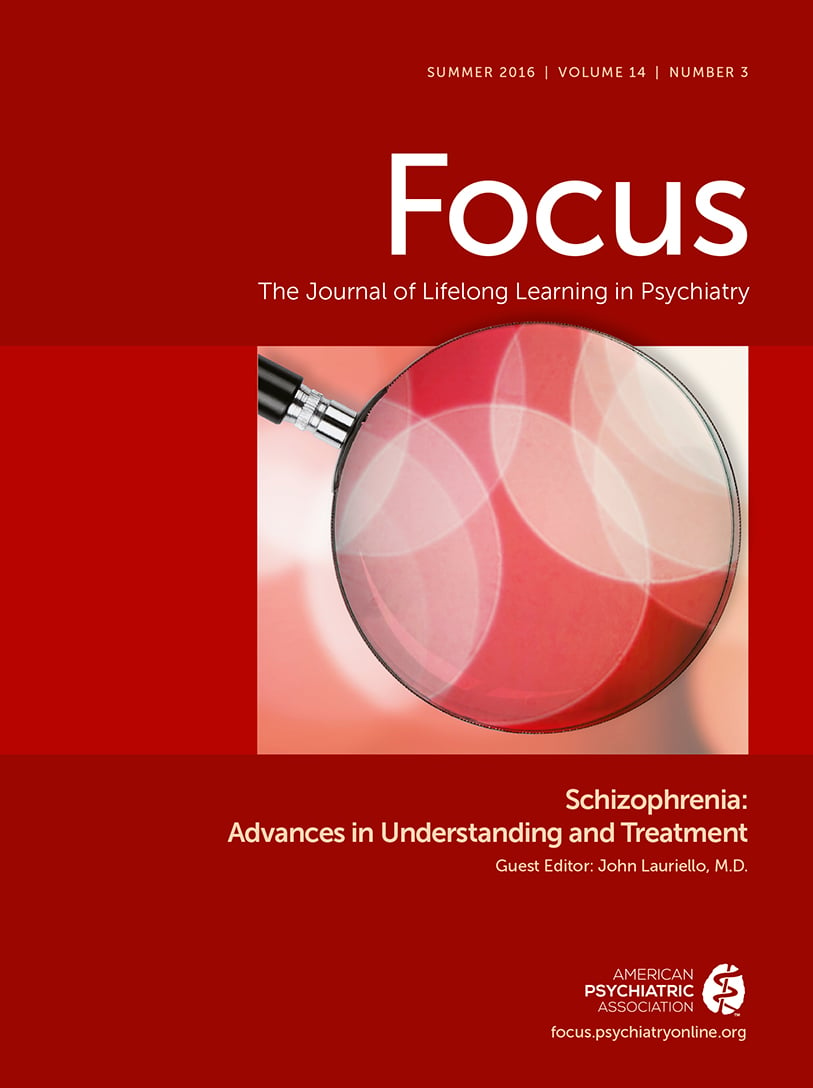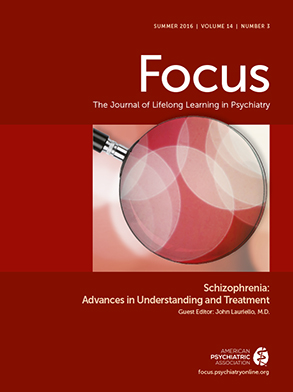Individuals with serious mental illnesses have cited the following reasons for dropping out of mental health treatment: the inability to actively participate in treatment decision making, unsympathetic providers, and not being listened to (
3,
4). Active outreach associated with team-based assertive community treatment teams may demonstrate relative effectiveness in the treatment engagement of individuals with schizophrenia; individuals with schizophrenia have been found to have lower rates of treatment disengagement than individuals with other serious mental illnesses (
4). A well-integrated team-based case management program that integrates rehabilitation plans based on patients’ expressed needs and values and that encourages their attendance at team meetings was found to improve overall quality of life and decrease the need for emergency and inpatient services for individuals with schizophrenia (
5). Although individuals with chronic psychotic illness may at times be so impaired by their symptoms that they are unable to participate in their treatment decisions for a period of time, it is becoming clear that emphasizing shared decision making and self-determination to the extent to which the individual is capable may be a powerful engagement tool to improve treatment adherence (
1).
Clinical Vignette
The Community Mental Health Team pulled up to a homeless shelter in an urban area. Mr. Jones sat on a bench outside, talking to himself. He had missed his last two appointments, including his depot medication, and the team was concerned about him. Mr. Jones stopped mumbling and eyed the team suspiciously. “You just won’t let me be, will you?” he barked, scowling at the team. The social worker, psychiatrist, and peer specialist stood a respectful distance from Mr. Jones.
“We missed you, Mr. Jones” a team-member began, looking kindly at him.
“Yeah, I bet. You missed the money, I suppose,” Mr. Jones bantered back.
“Now, Mr. Jones,” another team member said. “You know that we don’t just want to see you for the money. You are smart and interesting. We want to make sure that your symptoms don’t take that away.” Mr. Jones’s eyes softened briefly until the scowl returned.
“Tell us about what you are doing these days. Anything interesting?” another team member piped in, attempting to engage Mr. Jones in a strength-based manner.
“Yes, as a matter of a fact,” Mr. Jones replied. “I have joined the CIA and am on an undercover operation that I can’t tell you about.”
“Oh,” another team member mused. “I hope it isn’t dangerous. We want you to be safe.”
“Of course it’s dangerous,” Mr. Jones declared, raising his voice again. “It’s always dangerous when you are in the CIA.”
The team continued to engage Mr. Jones, carefully pacing their conversation and attending to Mr. Jones’ nonverbal and verbal cues. They talked about the weather, how he had slept, if the bed was comfortable, how he was eating, and how they missed him at his appointment and in the group. Mr. Jones’s stiff posture notably relaxed.
“Thank you for letting us know how busy you’ve been. Can we go inside and talk further? There is a private room and we brought your medication,” the psychiatrist suggested.
Mr. Jones frowned. “I knew that was going to come up. I don’t think I need that medication. It might cloud my senses.”
“Hmm. I can understand why that might be a worry. What do you think might help you think more clearly?”
Mr. Jones thought for a while. Well, I lost my headphones, so that might help. You know how much I like my music.”
“Well, I happen to have some earbuds. You can have those. You do have your i-Phone, right? How do you like the new app? I think I need one to remind me of appointments and when to go to bed, too.”
“Well, it is really useful for the head of the CIA to communicate with me. I’ve been eating and sleeping on time, too.”
“Good! I’m so glad. You know, you have been very helpful in the development of the app—so it can help others, too.”
“All right. I guess if you came all the way out here to give me my shot, we may as well get that over with. Do you want to see my new drawings? I have started water color painting, too.”
“Sure,” the team members replied in unison. After they had given the injection, taken vital signs, and completed an assessment, the team members followed Mr. Jones to his room where he shared the newest additions to his portfolio.
“Nice! So, shall we come pick you up next week for the group? The others asked about you. And your app will remind you,” the peer specialist said.
“Well, okay,” Mr. Jones replied. “Unless I am working—you can’t predict with the CIA.”
“I think they probably will give you the time off for the group. See you next Wednesday,” the social worker said warmly. As the team drove off, one of them noticed that Mr. Jones seemed to briefly wave.

